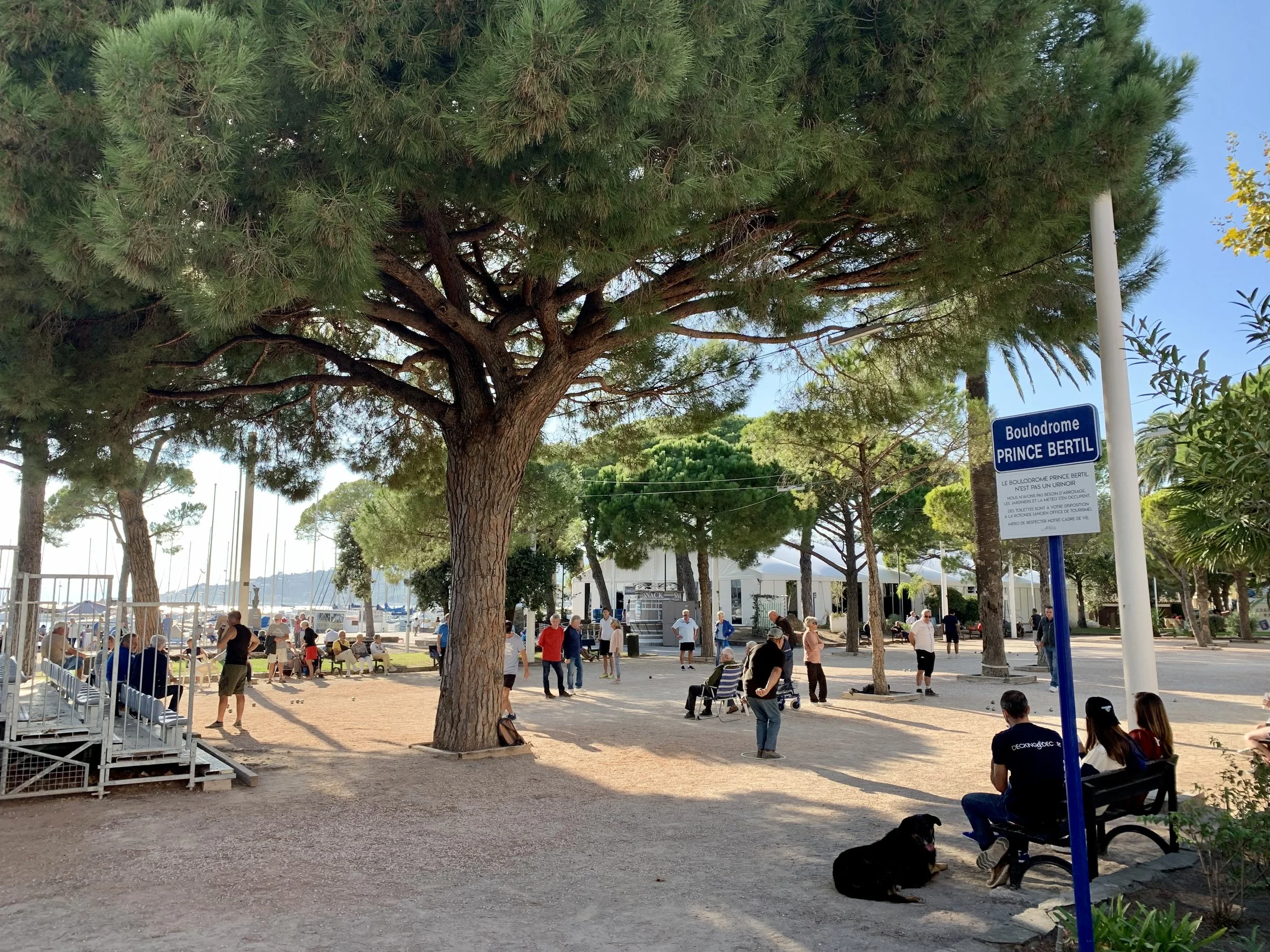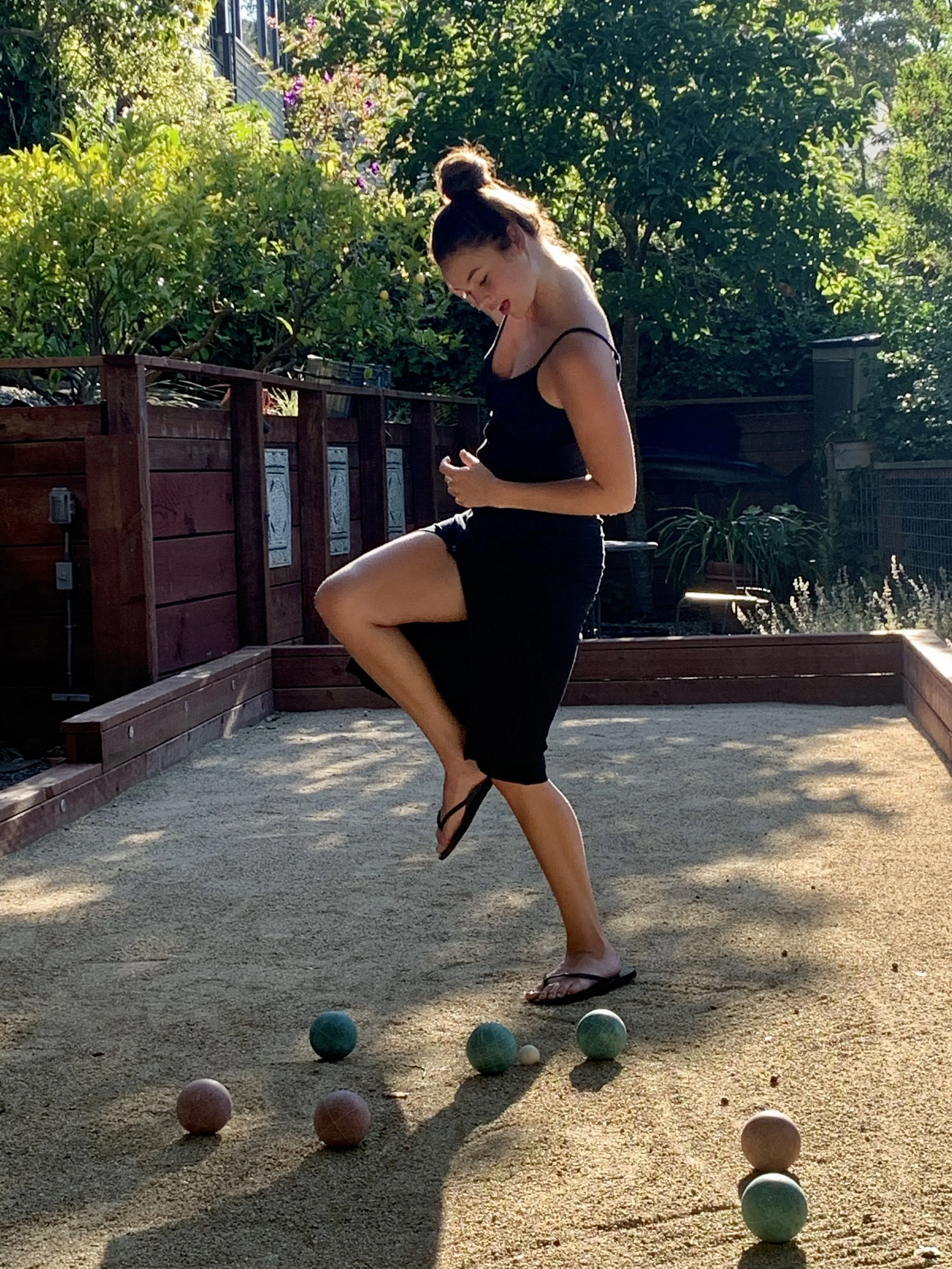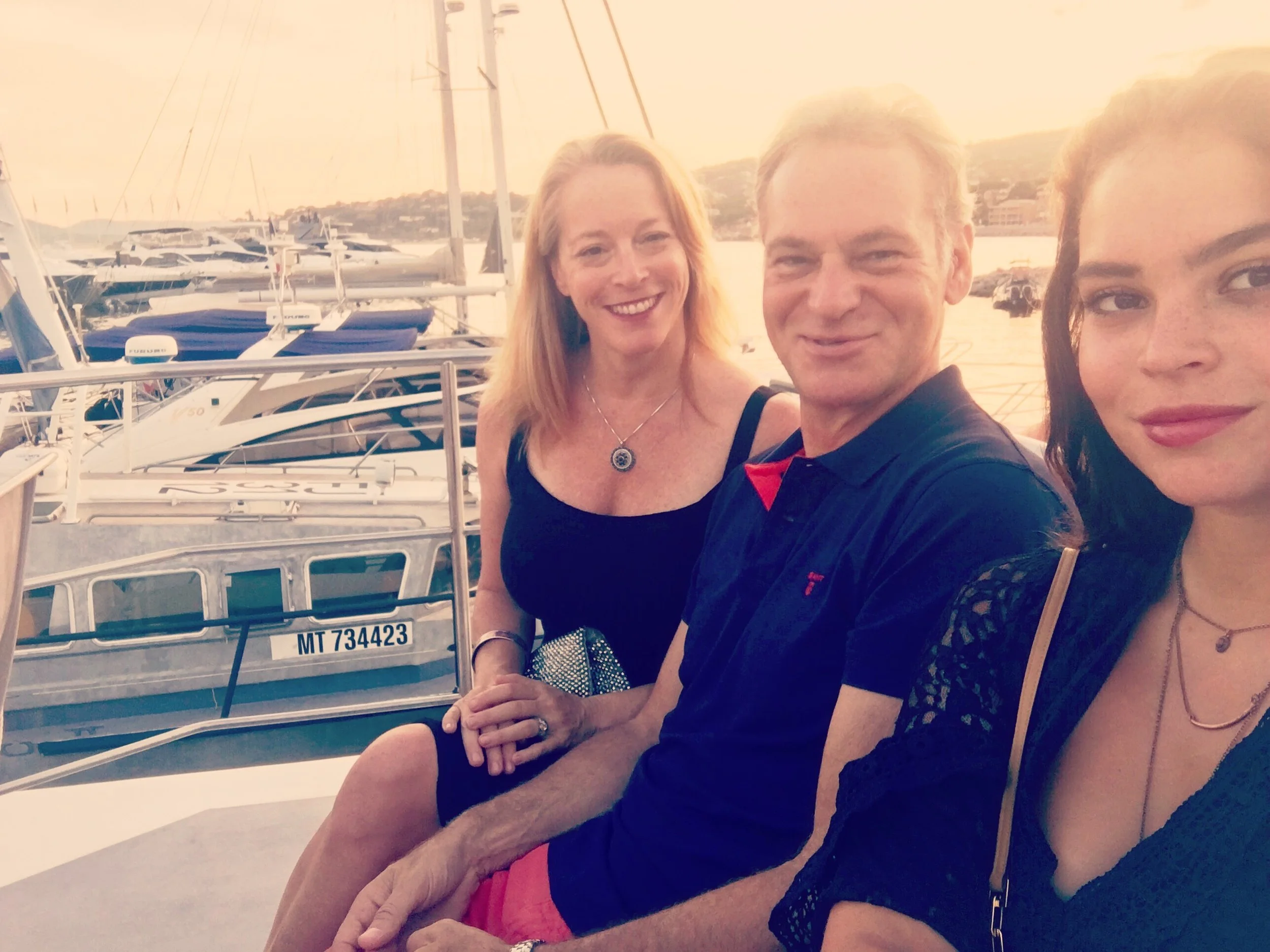A Game of Heart: Pétanque on the French Riviera
Under the shade of a plane tree in the seaside village of Sainte-Maxime, France, a man crouches inside a circle he’s sketched with his sneaker into the packed dirt. His knees press together, and in his right hand, he spins a silver metal boule about the size of an orange with his lean fingers. His eyes are focused on an apricot-sized ball on the ground, about 30 feet away. Then, in one frictionless pendulum swing of his arm, he launches his boule toward its intended target—his opponent's. A metal-on-metal clack of a direct hit elicits cheers from the rosé-swilling crowd as his ball rolls into a winning position. This isn’t a fluke. He repeats this maneuver round after round. My husband nicknames him Deadeye because he never misses.
After quickly securing his 13 winning points, Deadeye picks up his boules with a magnet attached to the end of a string, nods a gracious merci, and swaggers off the dirt. There is no question he’s been around the pétanque block a few times.
Sainte-Maxime is between Cannes and Saint-Tropez
We first arrived in sunny Sainte-Maxime in 2006 while we were living in rainy Brussels. My daughter, Chloe, was just six years old when we moved to Europe. Though we've sent many change-of-address cards over the years, our blue-shuttered Provencal village house, hemmed in along the Mediterranean Sea between Cannes and Saint-Tropez, has remained our most permanent. Some families mark their children’s growth with pencil tick marks on the kitchen wall year after year, but we marked ours in how far we’d let Chloe wander on her own in our little village.
Her first dose of independence came one morning when she was about nine, and she wanted to walk to the bakery, which we can see from our balcony. As she got older, Chloe ventured further from our front door, beyond the hardware store where the owner kept our spare key, to a café where teens gather to listen to rib-rattling DJ tunes, or to the beach with friends.
As much as she craved distance from us, as kids do, we were also a tight-knit threesome, spending most days together, swimming in the sea each morning, lunching over fresh tomatoes and burrata, and early evenings watching pétanque in the center of the village at what is called the Boulodrome Prince Bertil, which sounds like a setting in a Mad Max film—-The Boulodrome. But it’s much sweeter.
Ground zero for pétanque in Sainte-Maxime
As our family grew up in Sainte-Maxime, so did the game. Early on it was common to see tight knots of men in wool caps hunkered over a batch of boules. But women regularly show up now, often in skirts and strappy sandals (it is France after all), for camaraderie, competition, and a glass of rosé.
A few summers ago, I noticed more French teens arriving to play. Their choice to connect with their heritage rather than a WiFi network confirmed what I’d long suspected: that pétanque is not just a pastime but a link to a place, their place, in the history of the village.
While similar ball-tossing diversions such as British lawn bowling and Italian bocce have been played forever, pétanque is Provence’s game and has a much younger history. In its current form and name, pétanque was created in the shipbuilding port of La Ciotat, less than two hours from Sainte-Maxime. It’s here, in 1907, where brothers Ernest and Joseph Pitiot, owners of a local Café de l’Horloge, are credited with restructuring an existing game called le trois pas, or three steps, supposedly named for the three-step run-up players took before tossing the ball.
Café de l’Horloge in La Ciotat today
To accommodate a local player, Jules Le Noir, who suffered from severe rheumatism, the brothers changed the rules and dictated that the ball be thrown with feet fixed on the ground, or pieds tanqués. The two words eventually smushed into one word— pétanque, which is now the most popular form of boules in France, and as entrenched in daily life in Provence as Pastis and the cicada’s rhythmic song.
In Sainte-Maxime, we inquired about pétanque lessons one summer at the wooden shack adjacent to the pétanque terrain (as it’s called). “Ça se fait ici ?” “Do people do that here?” I asked.
“You have balls, you bring them, you play, you get better,” said the grouchy man with a shrug and puff of air through his lips.
God, I love the French.
Pétanque is no longer an “old man” sport
We took the just-do-it direction to heart, bought a set of boules, and taught ourselves basic rules. But what we’ve loved most over the more than 20 years of coming to Sainte-Maxime is watching our fellow villagers: husbands and wives, grandsons and grandfathers, friends and neighbors, gather together for friendship, community, and fun, just like we do.
It was during one of our regular voyeur sessions that Deadeye asked us to play, and the embrace of being welcomed home far from our homeland connected us even deeper to Sainte-Maxime. Though we moved back to the United States permanently in 2010, we clung to those moments that molded our young family and have been fortunate to return to Sainte-Maxime every year since.
As parents, my husband and I harnessed a life-is-like-pétanque wisdom Deadeye would be proud of. Sizing up the placement of the boules turns to conversations about focus and concentration. Savvy moves to knock a ball out of play became discussions about long-term goals. Being beaten by an opponent in less than 20 minutes ( merci, Deadeye) turns into a humbling talk on the importance of being gracious in victory and defeat. You get the idea.
Chloe getting silly in our backyard Boulodrome
When Chloe moved to Canada for college, my husband spent a month building a pétanque court in our California backyard. He painstakingly raked the finely ground gravel and carefully measured each piece of wood, building up a perimeter around our mini-terrain. Perhaps it was his way of holding our threesome captive a while longer. Eh voila! Pétanque became a family tradition on this side of the Atlantic, too.
In March 2020, when COVID-19 saw travel screech to a halt, we stayed put like everyone else. For the first time in nearly two decades, we didn’t decamp to France. But we still tossed a lot of boules over the uncertain spring and summer. Life felt different for another reason too: Chloe had a new life waiting for her in London in the fall and would be venturing even further from our front door.
The realization rolled in slowly, but it hit us dead on—the game we as parents are always playing against is time.
Family time in Sainte-Maxime
As much as she rolled her eyes at our life lessons, I know she still carries the most important ones with her: that no matter how far she wanders, she can always come home. And that while the terrain ahead might be full of competition, miscalculations, and near misses, in the game of life, as in pétanque, the first step is to grab your boules and show up.
Unless you’re Deadeye. That guy seriously never misses.






